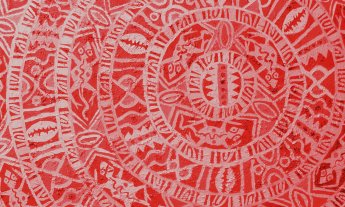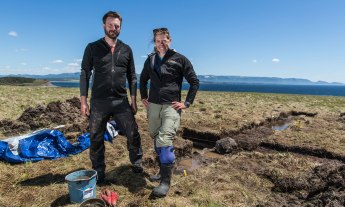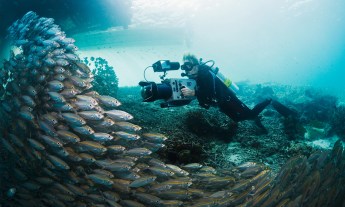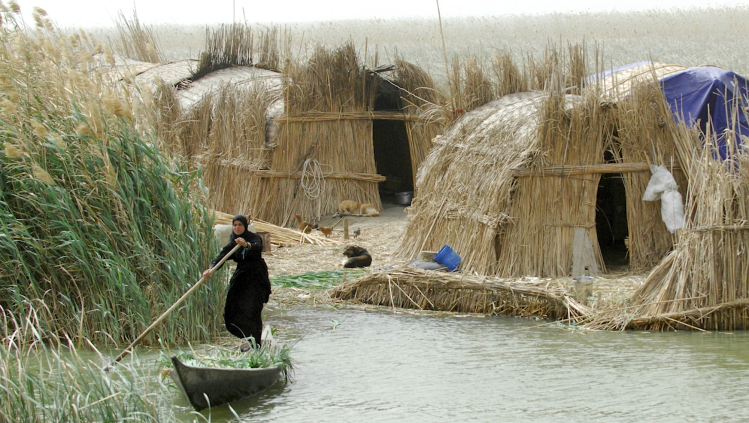
What comes to mind when you think of technology? Of all the words that pop into your head, “ancient” probably isn’t one of them.
In a world where high-tech solutions are practically synonymous with development, Julia Watson has taken a contrarian approach. The Australian-born, New York-based designer has spent a good part of her career traveling to Indigenous communities in the most remote parts of the world — from Benin to Iraq — to study how we can apply their ancient innovations to our planet’s contemporary environmental problems.
“What I find so fascinating about these technologies is how complex they are and how attuned they are to nature,” she says. As the world races to curb greenhouse gas emissions and limit the most extreme consequences of climate change, Watson believes we can look to ancient wisdom to help us design more sustainable infrastructure without exploiting nature.
Living root bridges that can withstand Northern India’s monsoon rains
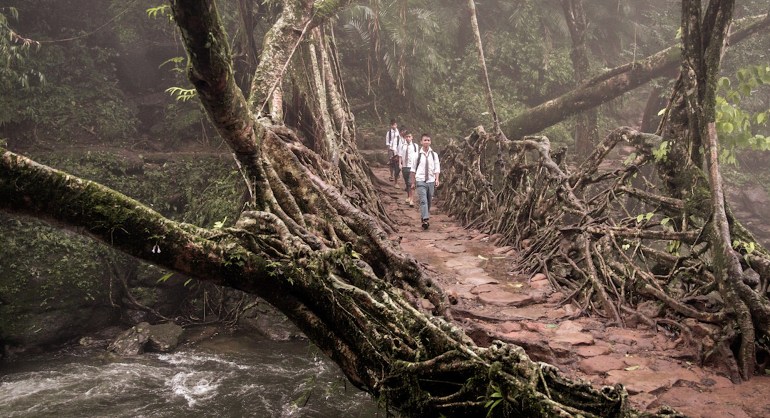
In the forested canopies of Northern India, the Khasi people live in one of the rainiest places on Earth. During the annual monsoon season, the floodwaters get so high that villages become isolated, and travel becomes extremely difficult. To solve this problem, the Khasi began to build “living” bridges around 1,500 years ago. This process — which can take up to 50 years — involves weaving together the roots of the ficus elastica, or rubber fig tree, and slowly guiding them across the river as they continue to grow. Not only are these bridges strong enough to withstand the monsoon torrents, but they get stronger over time and can last for centuries.
Biodegradable islands in southern Iraq’s wetlands
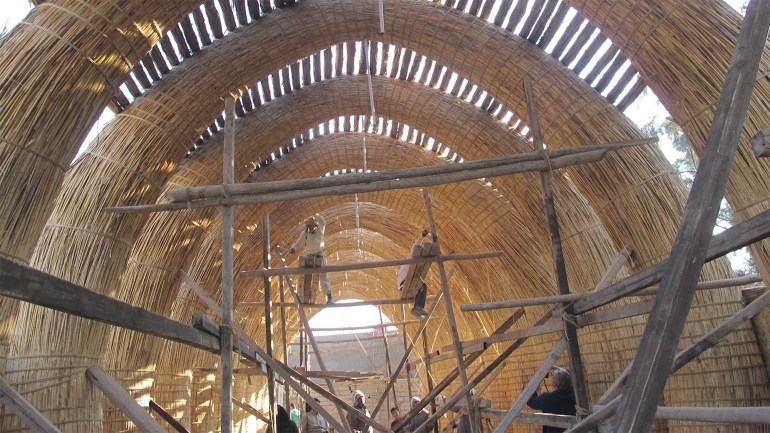
In Southern Iraq, where the Tigris and Euphrates rivers meet, the semi-nomadic Maʻdān people have lived in a unique, water-based civilization for 6,000 years. The native Quasab reed is an essential part of their way of life. Not only is it used for flour and water buffalo feed, but it’s also used to construct their floating villages. The Maʻdān dry and twist the reeds, and bundle them into columns to create walls, roofs and floors — all without a single nail. These hand-woven, durable and fully biodegradable islands can stay afloat for more than 25 years. However, because of political unrest and water insecurity in the region, these ancient building techniques have almost disappeared.
An artificial reef that feeds the Venice of Africa
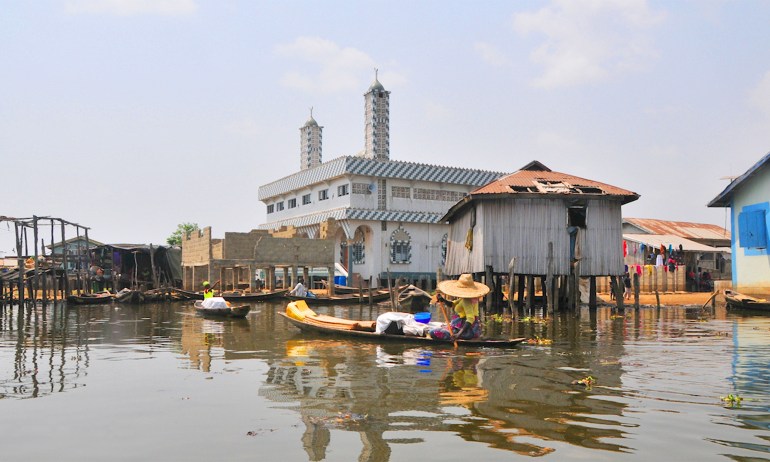
Today, the lake city of Ganvie in Benin is known as the “Venice of Africa.” Built over the course of 400 years, the Tofinu people constructed their community on stilted structures within a canal system, which can be traveled by dugout canoe. Among the more than 3,000 buildings are a royal square, post office, bank, mosque and even some bars.
The village is surrounded by 12,000 individual fish paddocks (also known as acadjas), which are built with local mangrove wood. By using the mangrove, the Tofinu people have created a chemical-free, artificial reef that feeds more than one million people living around it. This indigenous technology rivals the output of industrial aquaculture and fosters biodiversity.
An organic wastewater treatment system in the heart of Kolkata, India
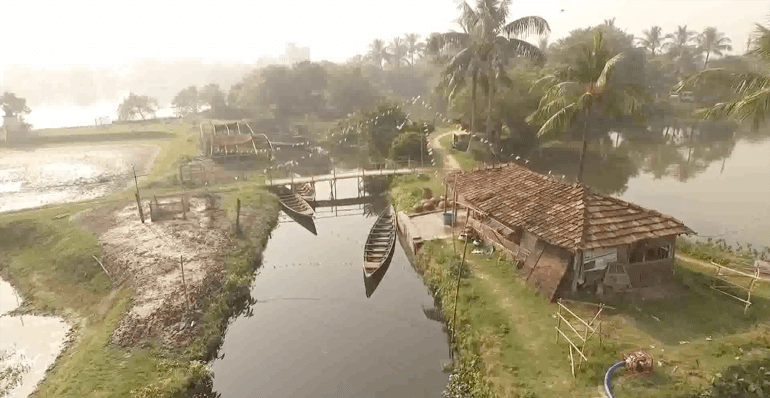
Known as the “City of Joy,” the Indian city of Kolkata is home to over 14 million people. Its Bheri wastewater aquaculture system is a model for chemical-free water purification that doesn’t rely on coal power. This organic technology features 300 fish ponds that clean sewage while simultaneously producing food. Using a combination of sunshine, sewage, algae and bacteria, wastewater is broken down over the course of about 30 days.
The entire system serves multiple essential functions and saves the city millions of tax dollars: it’s a fishery, waste management system, agricultural field, rice paddy network and community hub for nearly 50,000 people. It’s also the city’s only way of cleaning the water before it enters the Bay of Bengal. Unfortunately, the system is under increasing threat due to a rapidly growing population and urban development.
An ancient water-based civilization on Lake Titicaca in Peru
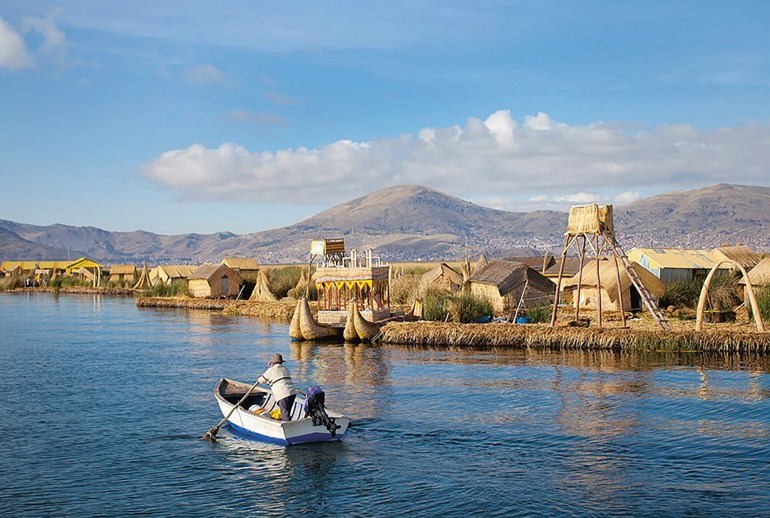
The Uros civilization dates back over 4,500 years, making it one of the oldest tribes in South America. In order to flee persecution from the ever-expanding Incan empire, the Uros people sought refuge on the waters of Lake Titicaca where they built an isolated floating community from locally grown totura reed. By weaving and layering the reeds, they built houseboats, islands and platforms. These structures make up a floating village, an aquaculture farm and an artificial wetland all within a single living infrastructure. There are currently 2,629 people living on the collection of 91 totora reed islands, which have become one of Peru’s most popular tourist attractions.
The top image from Iraq and the image from Peru are both excerpted from Julia Watson’s book Lo-TEK Design by Radical Indigenism. Copyright © 2019 by Julia Watson. Reprinted with permission from TASCHEN GmbH. All rights reserved.
To find out more about these unique structures and others, check out Julia Watson’s book Lo-TEK Design by Radical Indigenism, and watch her TED Talk now:









